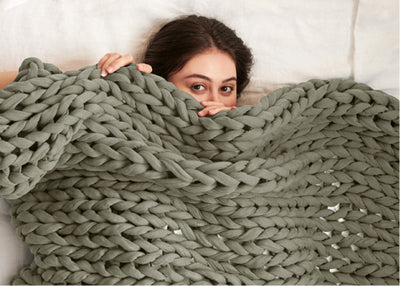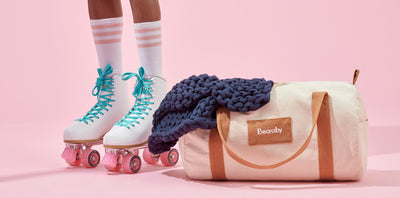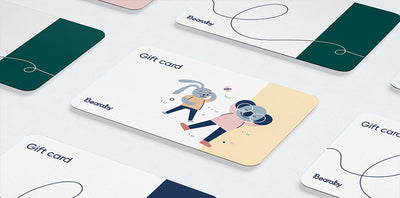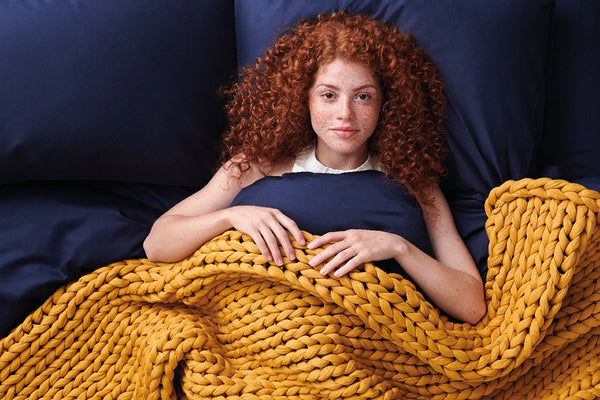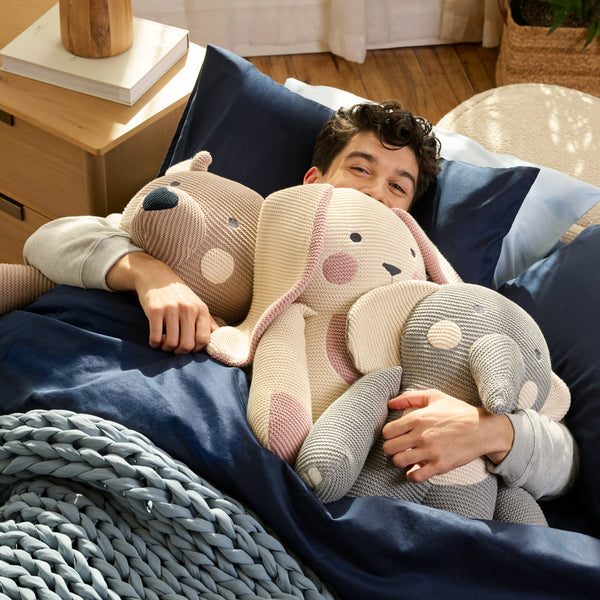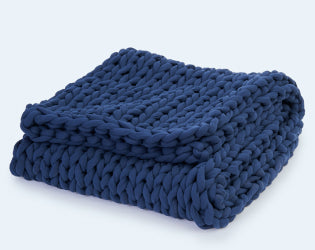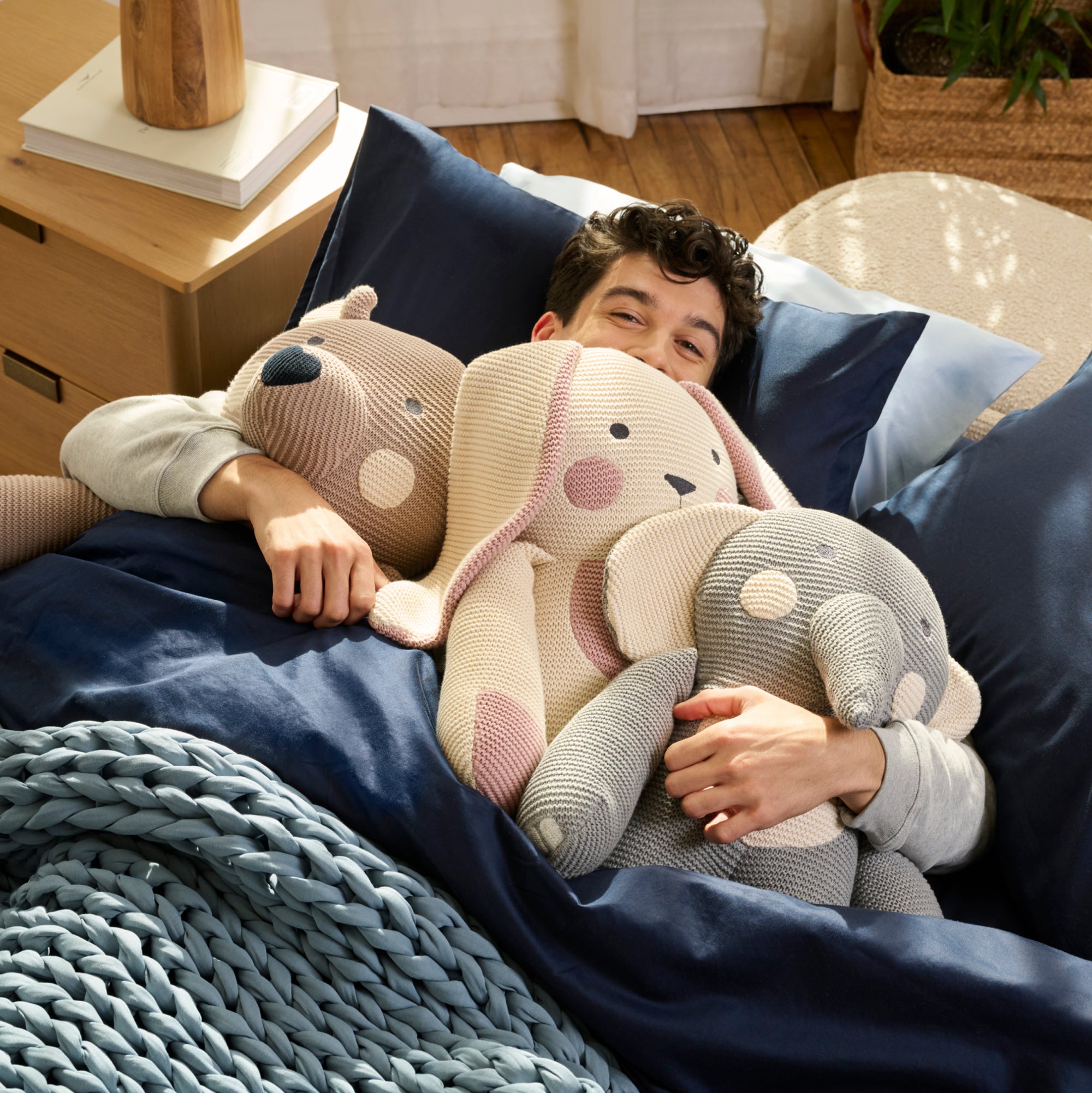Choosing Stuffing For Stuffed Animals: 8 Eco-Friendly Options
In this blog, we discuss the different kinds of materials used to make stuffed animals. We also share why the type of stuffing in your plush animal matters.
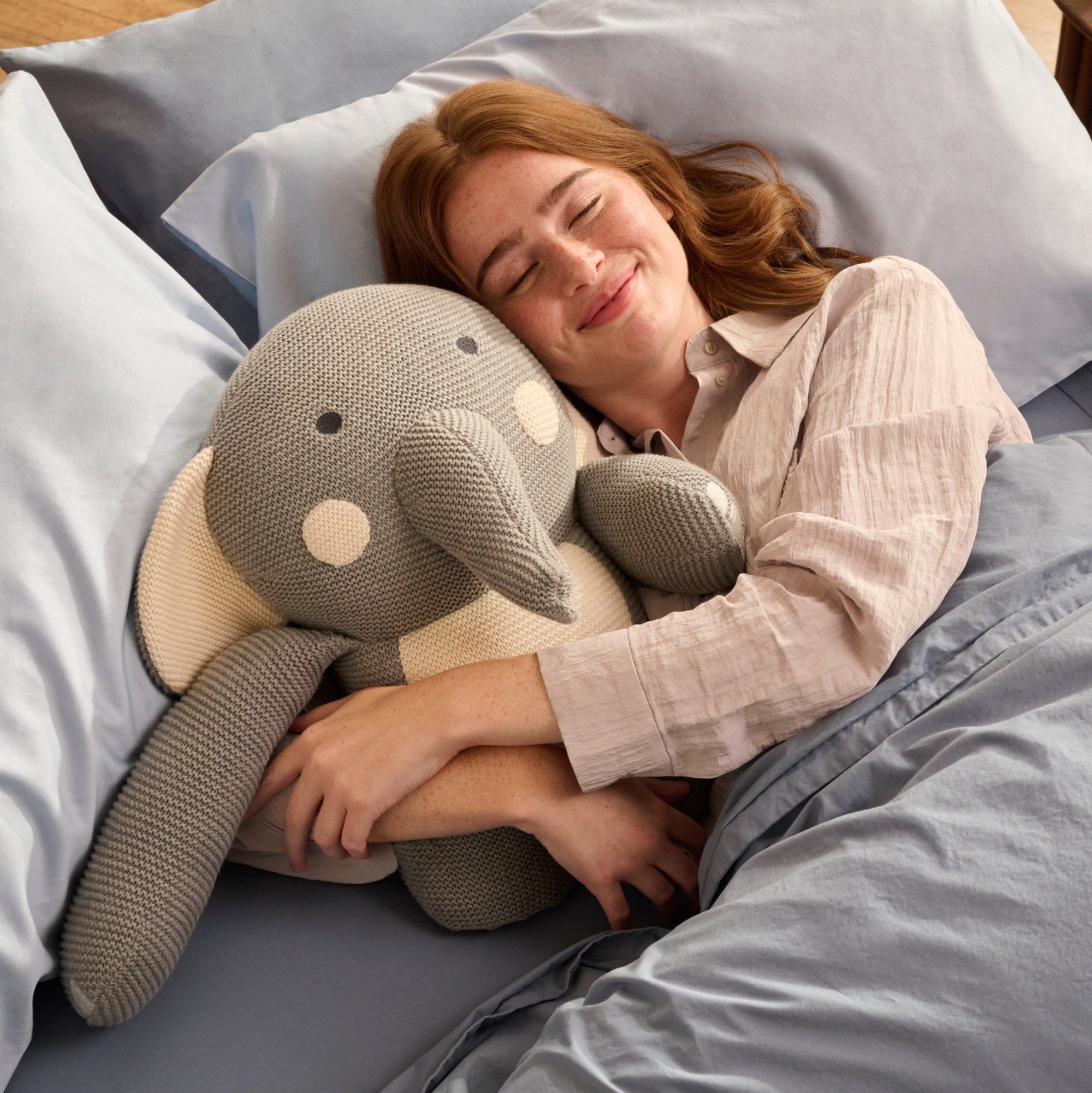
Bearassentials
Stuffed animals offer a calming effect by reducing anxiety when squeezed and hugged.
Opt for stuffed animals that are made of eco-friendly materials such as organic, natural, and recycled materials.
Consider stuffed animals that are weighted, for extra sensory relief through Deep Touch Pressure (DTP).
Did you know?
The classic teddy bear originated from a political cartoon in 1902, depicting President Theodore Roosevelt refusing to shoot a bear cub while on a hunting trip.
Stuffed animals have been used for many years to offer emotional support and sensory benefits for people of all ages. In this blog, we discuss why the stuffing in your plush animal matters and how you can choose stuffed animals that are not only good for you, but for the planet too.
Let’s dive in!
What Are Eco-Friendly Types of Stuffing For Stuffed Animals?
Here are some of the most sustainable stuffing options for plush animals:
Organic Cotton
Grown without synthetic pesticides and fertilizers, organic cotton minimizes environmental harm. The resulting material is soft to the touch, providing a plush feel for your stuffed animal, even when used as the outer shell fabric. Organic cotton is biodegradable and in this way addresses any lifecycle concerns for your plush animal.
Bamboo Fiber
For a fast-growing and renewable option, consider bamboo fiber as stuffing for your stuffed animals. Sourced from bamboo plants, this material is naturally antibacterial and hypoallergenic. Its rapid growth makes it an eco-friendly choice, and its biodegradability ensures minimal impact on the environment.
Kapok Fiber
Opting for kapok fiber as stuffing introduces a natural, silky element to your stuffed animals. Derived from the seed pods of kapok trees, this material is both lightweight and buoyant. Its resistance to mold and mildew adds durability to your stuffed animals. However, it’s essential to note that the availability of kapok fiber may be limited compared to other mainstream stuffing materials.
Corn Fiber (PLA)
Consider corn fiber, also known as PLA (polylactic acid), as a biodegradable and compostable stuffing for your stuffed animals. Derived from cornstarch, this material is made from renewable resources. Its biodegradable nature ensures a reduced environmental impact. However, just like kapok fiber, the availability of corn fiber might also be limited.
Recycled Fabric Scraps
For a sustainable and zero-waste approach, using recycled fabric scraps as stuffing for your stuffed animals is an excellent choice. This method repurposes discarded materials, contributing to a circular economy. Keep in mind that the texture may vary depending on the source of fabric scraps, but the overall impact on the environment is significantly reduced compared to using new materials.
Recycled Polyester Fiberfill
This stuffing material is crafted from recycled plastic bottles, effectively reducing plastic waste. Its lightweight nature ensures that your stuffed animals remain soft and cuddly while maintaining their shape over time. Additionally, it boasts hypoallergenic properties, making it suitable for a wide range of users. Keep in mind that, although it lessens the environmental impact of traditional polyester, it still originates from plastic sources.
For a more weighted feeling to your plush animal, these are some fillings that are both eco-friendly and on the heavier side. These include:
Clay Beads
Clay is a natural material, so it could be a great way to add weight to your stuffed animal without worrying about the use of synthetics. Clay beads are also a much more sustainable alternative compared to plastic pellets that are traditionally used for weighted stuffing.
The beads in our Bearabuddies stuffed animals are made with all-natural, tension-melting TerraclayTM, and the outer fabric is made of 100% cotton knit.
Organic Grains or Legumes
Consider stuffing your stuffed animals with organic grains or legumes, such as organic rice, lentils, or dried beans. These natural materials offer a biodegradable and non-toxic alternative to synthetic fillings. Not only are they environmentally friendly, breaking down naturally over time, but they also provide a safe option for those concerned about potential exposure to harmful substances. Additionally, organic grains or legumes can give the stuffed animals a comforting weight, contributing to a sensory and therapeutic experience.
Let’s look at factors to consider when deciding between different types of stuffing.
What To Consider When Choosing Stuffing
The stuffing in your toy matters because it impacts the toy's overall quality and safety. Here are several things to consider when selecting stuffing for stuffed animals:
1. Intended Use: Consider the purpose of your stuffed animal. If it’s a decorative item that won’t be used frequently, you might prioritize different characteristics than if it’s intended for regular squeezing and hugging.
2. Texture and Feel: Think about the texture you want your stuffed animal to have. Some fillings are softer and provide a more plush feel, while others may offer more structure or firmness.
3. Allergies: Take into account any potential allergies that you have. Some materials, like wool, may trigger allergies in some people, so choose hypoallergenic options if necessary.
4. Environmental Impact: Consider the environmental impact of the stuffing material. Opt for eco-friendly options such as recycled polyester, organic cotton, bamboo, or other sustainable materials.
5. Washability: Determine whether the stuffed item needs to be washable. Some stuffing materials may clump or lose their shape after washing, so choose stuffing that can withstand laundering if needed.
6. Weight and Buoyancy: Consider the weight and buoyancy of the stuffing. Some materials, like kapok, are lightweight and buoyant, whereas clay beads provide more heft.
7. Availability: Check the availability of the stuffing material. Some options, like kapok or specific eco-friendly fibers, may be less readily available than more common fillings.
8. Certifications: Look for certifications or labels that indicate the stuffing material's quality, safety, and eco-friendliness. Certifications like GOTS (Global Organic Textile Standard) or OEKO-TEX can provide assurance.
9. Ease of Use: Evaluate how easy the stuffing material is to work with. Some materials may be more challenging to manipulate or distribute evenly, affecting the overall appearance of your project.
10. Longevity: Consider the durability and longevity of the stuffing. Some materials may compress or lose their shape over time, while others maintain their integrity well.
By carefully considering these factors, you can choose a stuffed animal that best aligns with your needs and preferences for sustainability, texture, and functionality.
If you’re still on the edge about getting a stuffed animal for yourself or for a loved one, in the next section, we explain a little more about the benefits of having sustainable stuffed animals around.
Benefits Of Stuffed Animals
Stuffed animals offer a unique set of benefits, combining the comforting qualities of traditional plush animals. If weighted, they come with the added therapeutic effects of Deep Pressure Simulation. Here are more benefits of stuffed animals:
1. Anxiety Relief: The added weight in a weighted stuffed animal creates a sense of security to help reduce anxiety. The gentle pressure can promote relaxation and alleviate feelings of stress or restlessness.
2. Sensory Integration: Weighted stuffed animals can aid in sensory integration, helping individuals process and respond to sensory information more effectively. This is especially valuable for those with sensory processing disorders.
3. Improved Focus and Attention: The calming effect of weighted items can contribute to improved focus and attention. This makes weighted stuffed animals useful tools for people who may struggle with concentration.
4. Sleep Aid: The soothing properties of weighted wellness products extend to sleep. Using a weighted stuffed animal at bedtime can promote a sense of security and relaxation, potentially leading to improved sleep quality.
5. Stress Relief: The gentle pressure provided by the weight of the stuffed animal can be a natural stress reliever. It may help individuals unwind and cope with daily stressors more effectively.
6. Enhanced Proprioception: Weighted items can enhance proprioception – this is our sense of body awareness and position in a space. Enhanced proprioception can have positive effects on coordination and motor skills.
7. Therapeutic for Certain Conditions: Weighted stuffed animals are often used therapeutically for various conditions, including anxiety disorders, sensory processing disorders, and developmental stage challenges
8. Comfort and Emotional Support: Like traditional stuffed animals, weighted versions offer comfort and emotional support. The added weight deepens the sense of grounding and stability we feel when cuddling our favorite stuffed animal, contributing to an overall feeling of reassurance.
9. Portable Calming Tool: The portable nature of weighted stuffed animals makes them convenient calming tools that you can take along, providing comfort and support wherever needed.
Conclusion
Weighted stuffed animals offer a calming blend of comfort and therapeutic benefits, providing deep pressure stimulation that can help nurture the nervous system and reduce anxiety. These huggable companions are particularly valuable if you have sensory processing challenges, autism, ADHD, or even if you’re simply seeking stress relief.
Stuffed animals made with weighty stuffing can contribute to improved focus, relaxation, and better sleep quality. With versatility in design and portability, weighted stuffed animals serve as portable calming tools, offering both emotional support and a sense of security in the cuddliest form there is!

